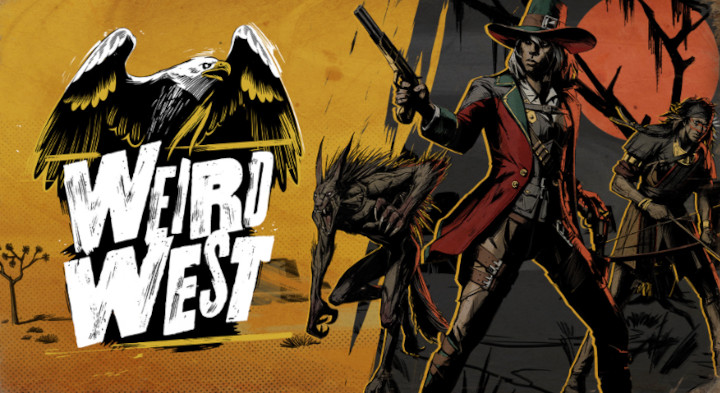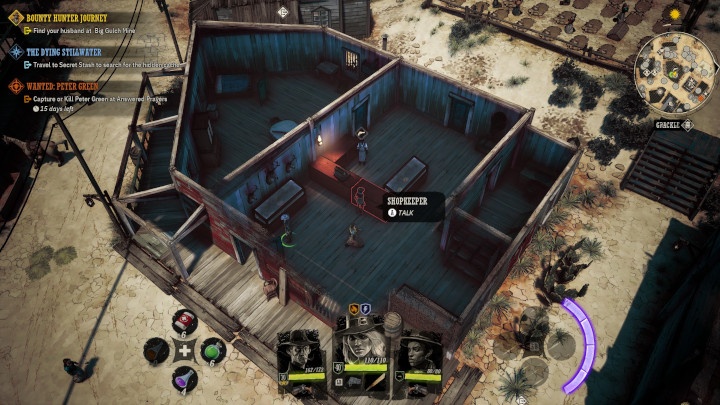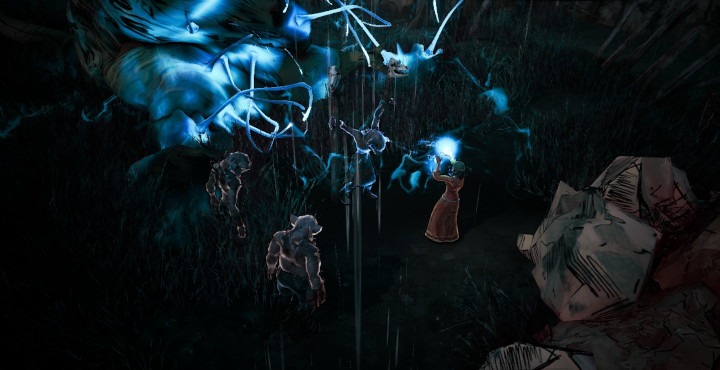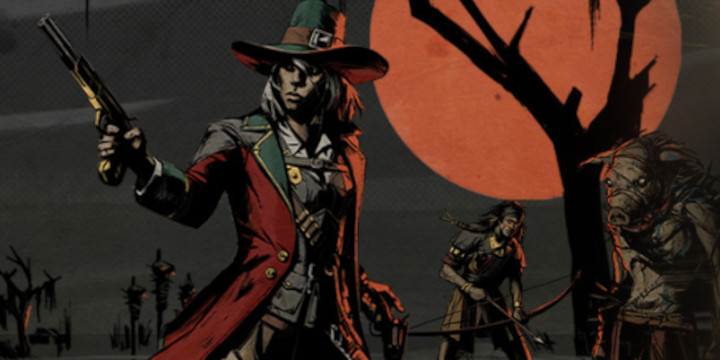
Weird West isn’t the first video game to mess around with the Weird Western genre. I’ve written about other games that dabbled with it in the past, such as the hyper-stylish, occult-infused Shot in the Dark. In fact, even the open-world mega-hit Red Dead Redemption 2 dips its toes into the genre a bit (and the Undead Nightmare expansion for Red Dead Redemption 1 is almost certainly the most famous example of Weird Western in video games).
But with Weird West, I think we’re finally starting to see the true potential of the Weird Western video game. This is a huge genre that opens up a lot of possibilities for incredible video-game worlds.
Weird West is basically a top-down-style RPG along the lines of the early Fallout games or Wasteland 3. It tells five consecutive stories in a demonic Wild West. For example, the first story places you in the role of ex-bounty-hunter Jane Bell, who digs up her revolvers when her husband is kidnapped by a group of cannibals. The second story is about a guy who’s brain was removed and stitched inside a Frankenstein-like monstrosity made of pig parts. And so on. These are some pretty compelling tales, and these concepts would have worked well in short-story format. But in this video-game anthology, they really come alive.
I’ve written a full review over at Lightgun Galaxy’s video-game-themed sister site Half-Glass Gaming, and I’m trying not to repeat myself too much here. You can check out that review if you want to know more about my thoughts on the game.

What I want to talk about here, though, is just how well the Weird Western genre blends with the video-game medium. Once you’ve played around in Weird West‘s sandbox, you’ll wonder how the mingling of the two has been so rare for so long.
One really obvious setting for video games is the post-apocalypse, which we’ve seen over and over again throughout the years (think Fallout or Biomutant or the nigh-uncountable number of zombie games that exist). Not only does that give people a destroyed environment to explore, but it also gives them an obvious enemy, usually zombies or mutants or aliens, depending on the cause of the apocalyptic event. It doesn’t take much thought to figure out how to build a video game around that concept.
I think the Weird Western is the same thing. It gives you a Western-themed environment to explore, and it also gives you a whole host of options for enemy types, such as vampires or or steampunk mutants or even Lovecraftian monstrosities. It feels like the Weird Western genre is fertile soil for video games — almost as fertile as the post-apocalypse.
Now, I said almost in that last paragraph for a couple reasons. First of all, Weird Westerns are generally set in the 19th Century, which means your weapon options are going to be somewhat limited. In a post-apocalypse you can have all sorts of modern weapons, from SMGs to laser beams to RPGs. In the Western, you’re looking at 19th Century tech.
However, I would argue that the “Weird” part of the genre gives you a lot more wiggle room. If you add some aliens, you can steal their rayguns and end up with some super futuristic weaponry (I’m thinking along the lines of Turok: Dinosaur Hunter here). Or you could swerve deeply into the occult, and create magic-infused weapons that mingle the old-school tech with magical components or add-ons. Or you could simply add a wizard class and give players a wide range of spells.

The other potential limitation I see is one of culture. While the post-apocalypse setting gives you a lot of options for video games, there’s also a compelling argument to be made for the cultural relevance of the genre. When we’re constantly barraged with news of a pandemic outbreak, global warming, and potentially crumbling democracy, it does feel like we’re moving toward our own very real apocalypse. So thinking about survival in a post-apocalyptic world doesn’t just feel like fantasy; it feels like a possible future that we could be contending with in real life.
While the Weird Western isn’t automatically relevant in the same way the post-apocalypse is, that doesn’t mean you can’t work cultural conversations into the narrative. For example, a zombie outbreak might comment on the pandemic, or the heat of a desert setting might comment on global warming. This does require a little more creativity and effort, but it’s certainly possible to make it all work.
Either way, I’m hoping that Weird West creates a legitimate hunger for the Weird Western genre, the same way that Cyberpunk 2077 created a hunger for the cyperpunk genre (another obvious choice for a video-game setting). The possibilities are near-endless, and it’s wild to me that this genre remains so unexplored in the video-game medium.
